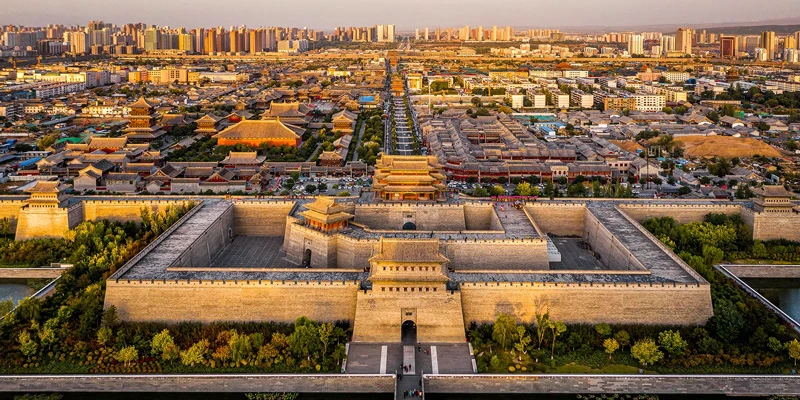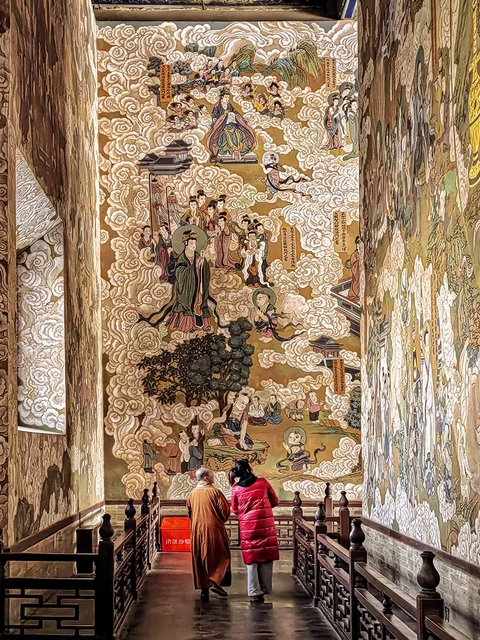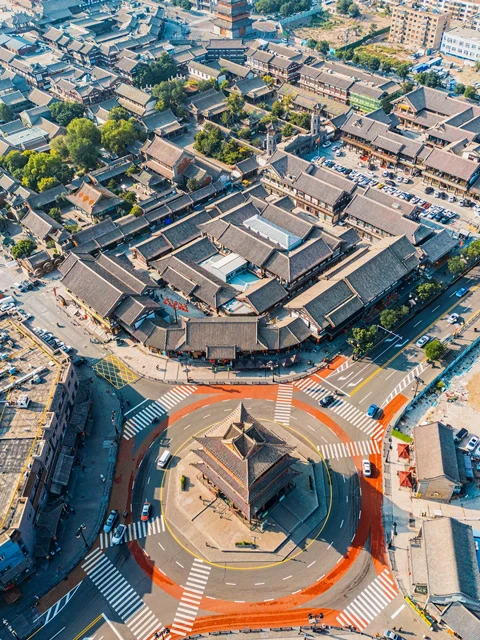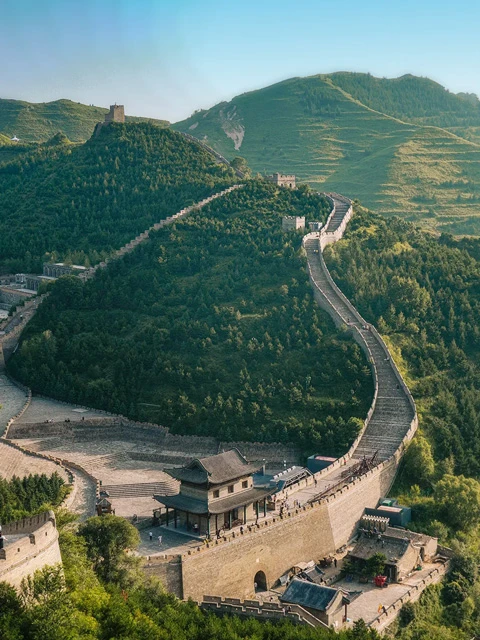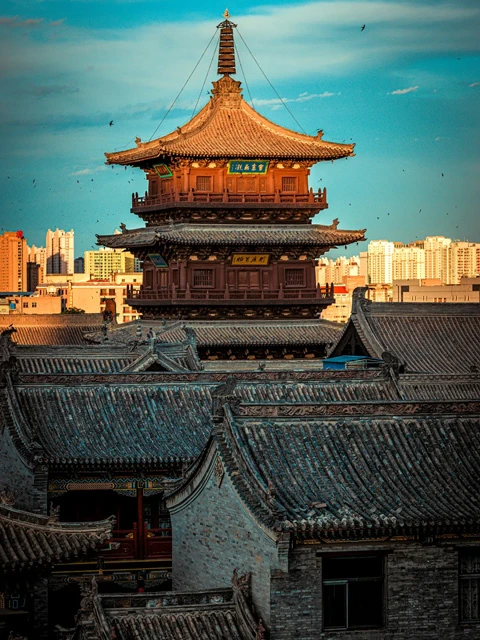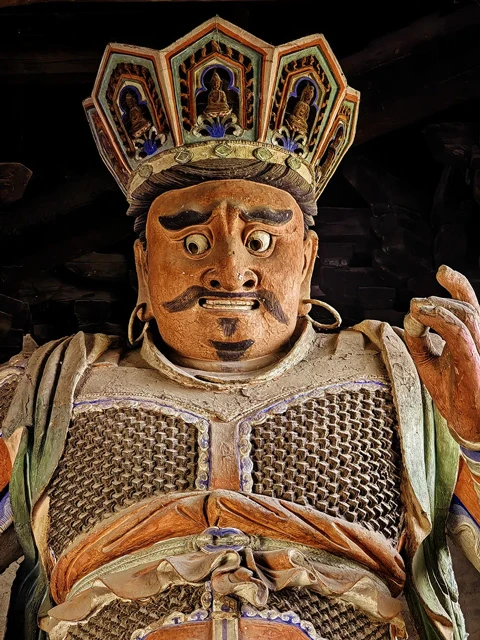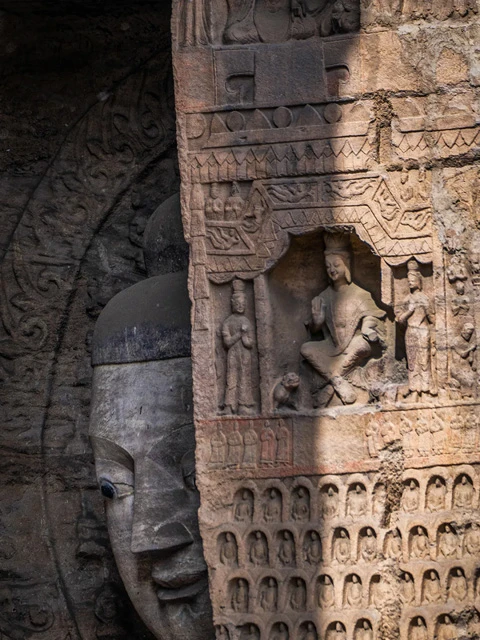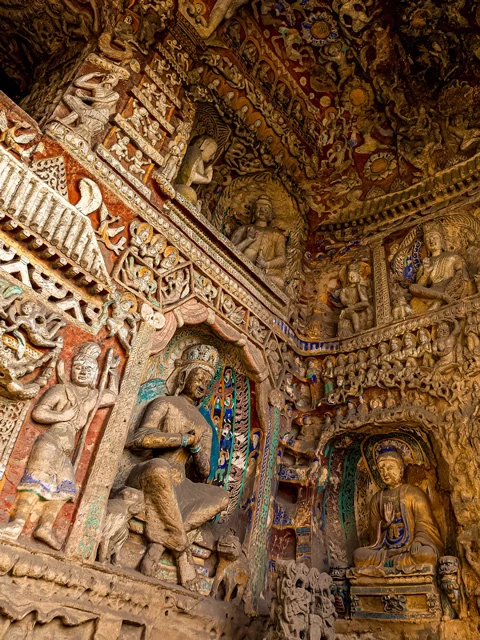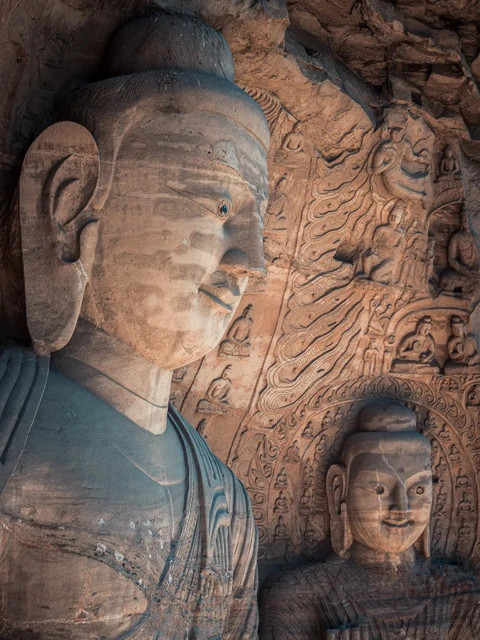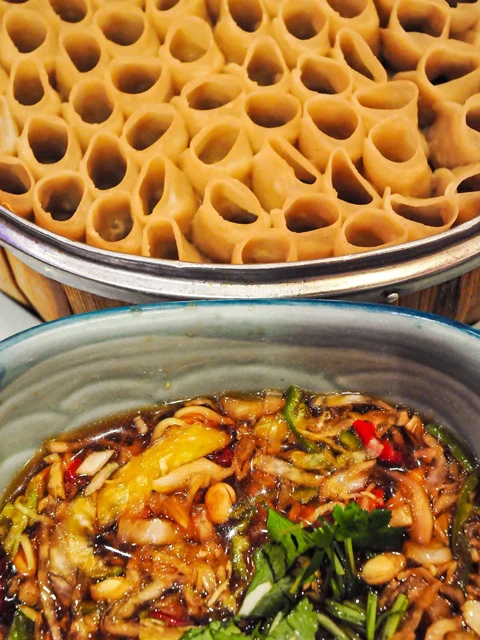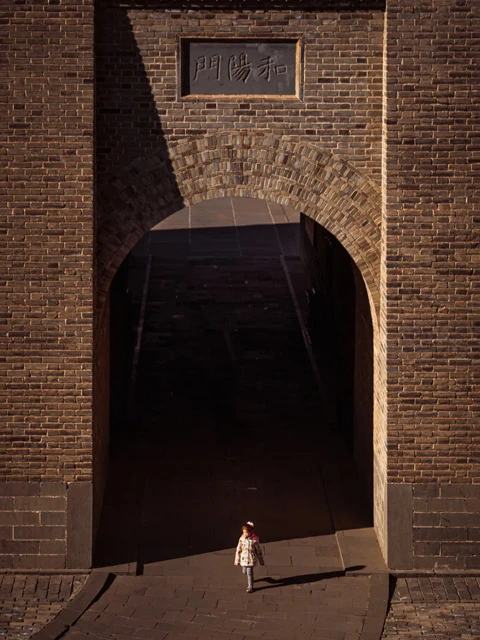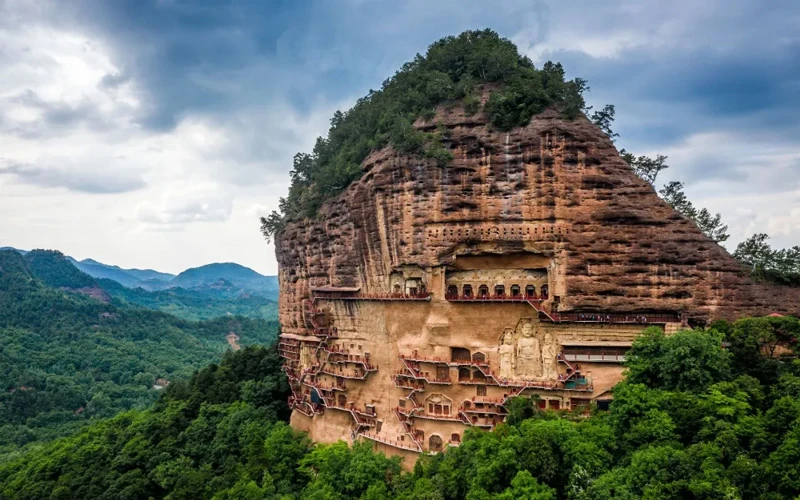In our historical memory, there is such an ancient city: here, King Wuling of Zhao implemented the Hu-style clothing and archery, cultivating a dominant northern power that could rival the Qin Dynasty among the seven warring states; Emperor Gaozu of Han, Liu Bang, battled fiercely against the Xiongnu, marking the rise of the Great Han Empire and engaging in ultimate clashes with the peak period lords of the grasslands; Emperor Xiaowen of Northern Wei carried out reforms here, sowing the seeds of a prosperous era, as writer Yu Qiuyu praised, "China advanced towards the Tang Dynasty from here." This is city Datong. In this article, let us follow the Di Dao Feng Wu to understand this city together.
In recent years, more and more people have rediscovered Shanxi, uncovering the dazzling ancient architectural treasure trove hidden behind the coal and vinegar; and more and more attention has been drawn to Datong, this understated ancient city just over 330 kilometers away from Beijing. People flock here, marveling at the grandiose rebuilt city walls, lingering in the magnificent and exquisite Yungang Grottoes that have stood for a thousand years, and being amazed by the Hanging Monastery perched on the cliff; yet this is only a fraction of Datong's myriad charms.
This city has thrice been the capital or secondary capital of dynasties, but compared to other ancient capitals such as Luoyang, Nanjing, or even Beijing, it always exudes an additional sense of grandeur and solemnity tempered by the flames of war. Since its establishment 2300 years ago, it has stood on the northeastern edge of the Loess Plateau. It is a junction of agriculture and nomadism, a window where China faces the Western Regions; it has witnessed the encounter of agricultural and nomadic civilizations, and experienced the rise and fall of dynasties. Through the long years and endless colors, Datong has been painted into an exceptionally profound and rich ancient city.
Ancient Architecture in Datong
The profound sense of history hits you the moment you catch sight of the Datong city walls - towering at 13 meter high, with the horse-faced city ramparts neatly arranged, a faint echo of the clang of swords from over 2300 years ago lingers in the solemn air. Though this city wall is a modern reconstruction, its scale and appearance are based on remnants from the Ming and Qing dynasties.
What's more important is that the locations of the Han, Northern Wei, Tang, Liao, Jin, and Ming dynasty city fortifications on this land have hardly changed over the centuries, all fitting within the outline of this city wall (the Han-era site is slightly more to the north, overlapping with the Northern Wei's Pingcheng site).
As you stand atop Yongtai Gate overlooking the ancient city, you find yourself gazing along the same central axis of the city as the ancient people of the Northern Wei did, with remnants of the Huayan Temple and Shanhua Temple from the Liao and Jin dynasties, the Guandi Temple from the Yuan dynasty, and the Drum Tower from the Ming dynasty; these ancient landmarks within the city represent layers of overlapping millenniums.
Cities that remain unchanged for millennia are quite rare: as people multiply and migrate, cities tend to evolve. Why has Datong always remained in the same spot? It is easy to see on the map that the Luliang Mountains, Taihang Mountains, and Yan Mountains converge in the northern part of Shanxi, where fractured geological layers and volcanic eruptions have torn open vast plains among the mountains, forming the "Datong Basin". At the southernmost and northernmost ends of this land, there are two names deeply familiar to the Chinese: "Yanmen Pass" and "Yin Mountains".
The Yin Mountains mark the southern edge of the Mongolian Plateau, serving as a natural barrier separating the agricultural and nomadic ways of life, and this barrier happens to form a broken gap at the northern end of the Datong Basin. Datong City has had to be firmly anchored outside the Yanmen Pass, at the foot of the Yin Mountains, like a nail, to prevent the entire Shanxi region and even the northern frontier from being left wide open. The mountains and rivers remain unchanged, the city fortifications unaltered; this is the inherent mission of this city.
With each change of dynasty, Datong becomes the main battleground for political power struggles. As time passes, the smoke of war fades away, yet the traces left by the emperors who once vied for power in the city still remain, forming a unique cultural accumulation. Nowadays, it is very popular to visit Shanxi to see relics, and those who have visited often praise the exquisite craftsmanship and intricate decorations in the ancient buildings. But standing in front of the main hall of the Huayan Temple, your initial reaction might very well be - grand.
This is one of the largest existing Liao and Jin wooden structures, with a platform alone standing at over four meters high, and a pair of glazed chilong on the hall roof towering at a staggering 4.5 meters. Standing under the eaves, you can't help but feel the massive bracket sets and lotus petal-shaped door frames flowing towards you like waves, layer upon layer. Stepping into the hall, the grandeur becomes even more apparent. A notable feature of Liao and Jin architecture is the use of the "reduced column method" to create spacious interiors, which, compared to contemporary Song dynasty architecture, more boldly inherits the grand style of the late Tang dynasty, appearing even more magnificent.
The Baojia Jiao Hall serves as the "scripture repository" within the temple, with a similarly simple and robust exterior tone, yet containing a world within: wooden wall recesses and celestial palace pavilions surrounding the three walls are intricately carved. The most distinctive feature of the Buddha statues in the hall is that some wear gilded high crowns derived from the Liao dynasty noble crowns, while others don armor, reflecting the nomadic peoples' emphasis on military affairs. The postures of these Buddhas are not as serene and solemn as we commonly see; especially the statue of the Buddha in the hall, with a graceful posture and slightly parted vermilion lips, resembling the innocent and lively maidenly demeanor.
The Shanhua Temple in the south of the city was also built during the Liao and Jin dynasties, but as people enter through the mountain gate, they are often first drawn to the vividly sculpted "Four Heavenly Kings" from the Ming dynasty - for no other reason than the overly vivid expressions of the Heavenly Kings.
Upon entering the main hall, one can see the solemn Jin dynasty painted sculptures. Each statue exudes the roundness and magnificence unique to Jin dynasty painted sculptures, especially the "Deva of Merit", with a serene countenance and eyes like water, as if time slows down when passing by her side. After admiring the painted sculptures, do not forget to look up at the exquisite artistic masterpiece - Caisson. It is so exquisite that one pair of eyes is simply not enough to take it all in.
After strolling through the ancient city, heading to Mount Heng, the Hanging Temple perched on the cliffs is even more impressive than Mount Heng itself. Upon seeing the Hanging Monastery suspended on the cliff for the first time, you might also exclaim: how could such a massive structure stand for a thousand years with just a few slender columns for support?
Indeed, relying solely on a few columns is not enough - in fact, these columns bear almost no weight at all; they were mainly built to reassure visitors. The center of gravity of this "hanging building" is deeply embedded within the mountain, and beneath its ethereal appearance lies an extremely sturdy structural mechanics.
The wonder of the Hanging Temple does not just lie in its external appearance, but also in the harmonious integration of Confucianism, Buddhism, and Taoism. Within the Hanging Temple, there is the Pure Yang Palace dedicated to the Daoist patriarch Lü Dongbin, and the Thunder Sound Hall dedicated to the Buddhist patriarch, with all three religions sharing the same altar, honoring the Buddha, Laozi, and Confucius together. To have such a marvel, Datong truly lives up to its reputation as a city of great tolerance.
Gem of The Silk Road
In the western outskirts of Datong, the most captivating destination is undoubtedly the Yungang Grottoes, a Buddhist wonderland. Carved during the Northern Wei Dynasty and taking over 70 years to complete, these grottoes sprawl for a kilometer at the foot of Wuzhou Mountain. Just as geographer Li Daoyuan described, "Carving through rock and opening mountains, due to the rock structure, the true appearance is grand and majestic, surpassing common standards." Today, visitors are moved by the sight of giant Buddha statues over ten meters high, their faces bearing a mysterious smile that has transcended millennia, captivating all who witness the allure of these ancient caves.
Hidden within the Yungang Grottoes lies a deeper secret: it stands out among many Buddhist grottoes in China with its distinctive Central Asian and Hellenistic influences. Not confined to ancient India or Central Asia, within the Yungang Grottoes, you can see Greek-style columns, Romanesque designs, offering a comprehensive view of the handshake between the Chinese nation and the world.
The fusion of civilizations is always gradual, a principle evident in the Yungang Grottoes: the open-air Great Buddha of Cave 20, part of the earliest carvings at Yungang, exudes a solemn and primitive charm. Upon closer inspection, this Buddha features high nose and deep-set eyes, a distinct Central Asian appearance, and wears robes in the Gandharan style. During the Northern Wei Dynasty, the Yungang Grottoes reached their peak period of carving during the Taihe era, with increasingly elaborate and magnificent sculptures. Particularly in Cave 12, known as the "Music Cave," intricate depictions of lavish musical and dance scenes featuring Western instruments such as the pipa, harp, and flute, create a grand cultural celebration. The latest grottoes exhibit more pronounced Han cultural elements, with figures depicted in slender stature, adorned in fine robes and belts.
The rich and vibrant Yungang Grottoes were born in Datong, not by chance. In the 5th century AD, the Northern Wei Dynasty established its capital in Pingcheng, present-day Datong. For nearly a century, Datong stood as the most crucial city at the eastern end of the Silk Road, with closer ties to the Western Regions than the Han Dynasty. Silver coins from the Persian Sassanid Empire, gemstone vessels from Central Asia, accompanied by swirling dances of the Hu people, continuously flowed through the city gates.
A hundred years after the Northern Wei Dynasty, China entered the prosperous Tang Dynasty. Just as inscribed on a stone tablet by Yu Qiuyu on the hillside next to the Yungang Grottoes, "China strides towards the Great Tang from here."
A Symphony of Carbohydrates nd Meat Unfolds
For thousands of years, the Central Plains dynasties and nomadic tribes have engaged in a tug-of-war around the Yin Mountains. Little did the people of that time realize that the fate of royal power was not determined by tangible mountain passes, but by an invisible and intangible 400-millimeter precipitation line.
This line stretches across the land of China from the Greater Khingan Range to the Yin Mountains, Helan Mountains, Bayan Har Mountains, and the Gangdise Mountains, defining the boundaries between farming and animal husbandry. When this line shifts north or south due to climate change, the dynamics between agriculture and nomadism undergo fundamental changes. Today, the smoke of war and the flames have become fleeting, yet this line of life still shapes the earthly delights of Datong - in the fertile Datong Basin, there are memories of carbohydrates blooming on the loess soil for a thousand years, alongside the grandeur of meat dishes belonging to the grasslands.
Just like every city in Shanxi, noodles are the main theme of Datong, and "knife-cut noodles" are the city's signature dish. Do not underestimate a bowl of lukewarm noodles, as it carries the fragrance and character honed by the dry winds and fierce sun of the Loess Plateau, skillfully kneaded into a soft texture. Every unassuming noodle shop has a knife master who expertly slices each noodle with precision and smoothness. The broth is generously filled with pork, beef, tomatoes, and eggs, accompanied by large chunks of tofu and sliced meat. With each mouthful, even the most troubled soul will find solace in the warmth.
Datong's miscellaneous grains are exceptional. In the harsh and arid environment, oats play a leading role among the grains. The locals have mastered its untamed texture, crafting different shapes. The chefs' secrets remain a mystery, as these creations may change in appearance but retain the same delightful taste. With bean flour, sorghum flour, potato starch, buckwheat flour, locals skillfully prepare them, allowing you to enjoy a different dish every day without getting tired.
While carbohydrates are abundant, the meat offerings are extraordinary. Datong is a realm of mutton, consumed three times a day, from morning till night, without interruption. Not to mention the thick slices of meat in the assorted hot pot, sizzling alongside fried dough sticks and fatty pork. Whether it's the daily home-cooked stews or the spicy lamb skewers with chewy meat, even a bowl of the most common yet representative lamb offal stew requires the indulgence of using fat from the famous Guangling Sheep to bring out its full flavor.
Mutton sauce pairs perfectly with noodles, while mutton oil chili enhances the taste of cold noodles. Adding potato starch to the lamb offal stew completes the culinary experience, especially during cold days when a bowl of lamb noodle stew signifies happiness. But that's not all. In Datong, one cannot miss the mutton shaomai. These fist-sized shaomai are tender and juicy, oozing oil with every bite, priced by weight of the dough skin, making them incredibly affordable.
In Datong, one must take their time to explore. Only by moving slowly can you feel the texture of the city, reading the stories etched in every brick and beam. No matter how carefully you observe, every return to Datong unveils richer content in the memories, be it history, life, or the enduring strength witnessed over the long years. You must visit Datong at least once. And as you prepare to depart, anticipate the next journey before bidding her farewell.
